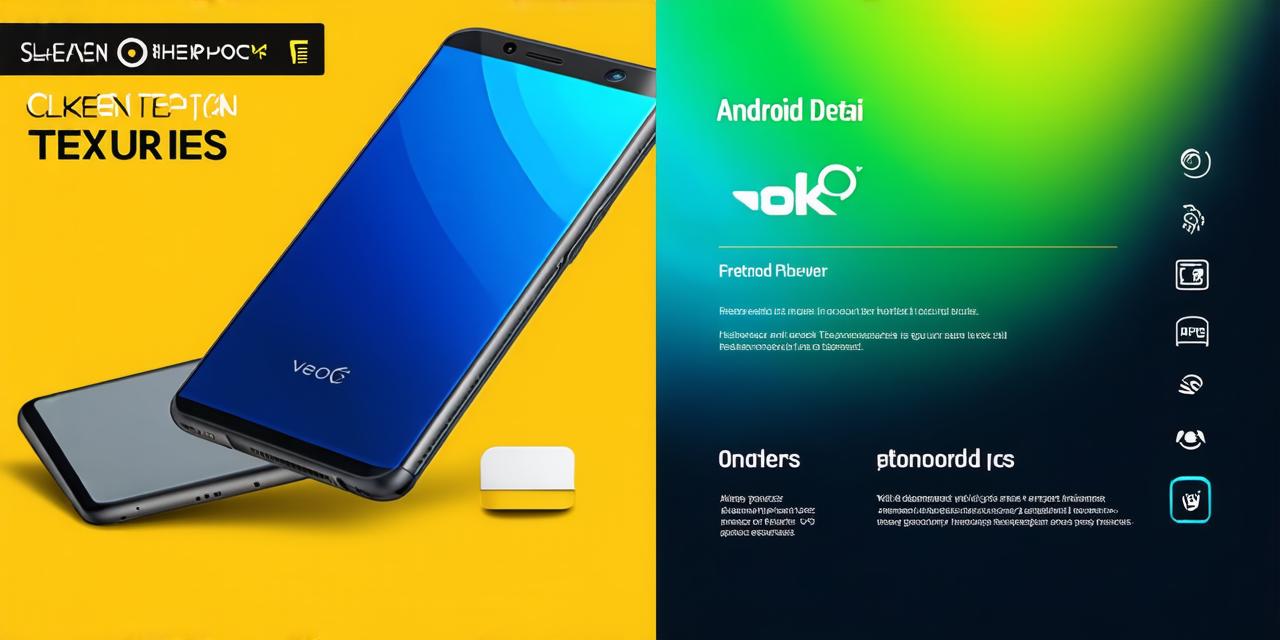Are you a business owner looking to expand your reach and increase revenue potential by developing an app for both Android and iOS platforms? Look no further! In this comprehensive guide, we’ll explore the benefits of developing apps for both Android and iOS devices, provide you with practical tips on how to find the best app development tools for your needs, and showcase real-life examples of successful businesses that have achieved success by developing apps for both platforms.
Benefits of Developing Apps for Both Platforms
Developing an app for both Android and iOS platforms has numerous benefits that can help grow your business and increase revenue potential. Here are some of the top advantages:
- Increased Reach: By developing an app for both Android and iOS platforms, you can reach a wider audience than if you only focused on one platform. According to Statista, as of 2021, there are approximately 2.7 billion active smartphones in use worldwide, with around 87% running on Android and 13% running on iOS. By developing apps for both platforms, you can tap into this vast potential customer base.
2. Improved User Experience: Developing an app for both platforms allows you to provide a consistent user experience across all devices. This is especially important for users who switch between devices frequently. With cross-platform development tools, you can create an app that looks and functions the same on all devices, providing a seamless user experience.
3. Higher Revenue Potential: According to Sensor Tower, Android app store revenue was $108.9 billion in 2020, while iOS app store revenue was $54.3 billion. By developing apps for both platforms, you can increase your revenue potential and tap into the lucrative iOS market.
Best App Development Tools for Both Platforms
When it comes to developing an app for both Android and iOS platforms, there are several cross-platform development tools available that can help streamline the development process and reduce costs. Here are some of the most popular options:
- React Native: React Native is an open-source mobile application development framework created by Facebook. It allows developers to build native apps for both Android and iOS platforms using a single codebase. This makes it easy to develop, test, and maintain your app across multiple devices.
- Xamarin: Xamarin is another popular cross-platform development tool that allows developers to create apps for both Android and iOS platforms using C as its primary programming language. It provides a set of tools for building native-like apps with a familiar development experience.
- Flutter: Flutter is an open-source mobile application development framework created by Google. It allows developers to build fast, beautiful, and native apps for both Android and iOS platforms using the Dart programming language. With Flutter, you can create apps that look and feel like native apps with minimal code duplication.
- Cordova: Cordova is an open-source mobile application development framework that allows developers to build apps for both Android and iOS platforms using HTML, CSS, and JavaScript. It uses a plugin-based architecture that allows developers to easily add features and functionalities to their app.
Case Studies: Successful Businesses that Developed Apps for Both Platforms
There are numerous businesses that have achieved success by developing apps for both Android and iOS platforms. Here are some real-life examples:
- Instagram: Instagram is one of the most popular social media platforms in the world, with over 1 billion monthly active users. The app was developed for both Android and iOS platforms using React Native, a cross-platform development tool. This allowed Instagram to provide a consistent user experience across all devices and reach a wider audience.
- Uber: Uber is a ride-sharing app that has become synonymous with the gig economy. The app was developed for both Android and iOS platforms using Xamarin, a cross-platform development tool. This allowed Uber to provide a native-like app experience across all devices while also reducing development time and costs.
- Zomato: Zomato is a food delivery app that allows users to order food from their favorite restaurants. The app was developed for both Android and iOS platforms using Flutter, an open-source mobile application development framework. This allowed Zomato to provide a fast and beautiful app experience across all devices, making it easier for users to find and order food.
Practical Tips for Finding the Best App Development Tools

When it comes to finding the best app development tools for your business needs, there are several factors to consider. Here are some practical tips to help you make an informed decision:
- Consider Your Business Needs: Before selecting an app development tool, it’s essential to consider your business needs and requirements. For example, if you require a lot of native-specific features, you may want to consider using Xamarin or Flutter.
- Look at Ecosystem Support: The ecosystem support provided by each development tool is also an important factor to consider. For example, if you want to take advantage of the vast ecosystem of .NET libraries and frameworks, Xamarin may be the best option for you.
- Consider Development Time and Cost: The development time and cost required to create an app using each development tool are also essential factors to consider. For example, React Native and Xamarin allow for faster development times due to their ability to use existing codebases.
- Check out User Reviews: Finally, before making a decision, it’s essential to check out user reviews of each development tool. This can provide you with valuable insights into the strengths and weaknesses of each tool, helping you make an informed decision that meets your business requirements and helps you achieve success in the mobile app market.
Conclusion
Developing an app for both Android and iOS platforms has numerous benefits that can help grow your business and increase revenue potential. With the right app development tools, you can create beautiful, fast, and responsive apps that provide a seamless user experience across all devices. By considering your business needs, ecosystem support, development time and cost, and user reviews, you can make an informed decision that meets your business requirements and helps you achieve success in the mobile app market.
